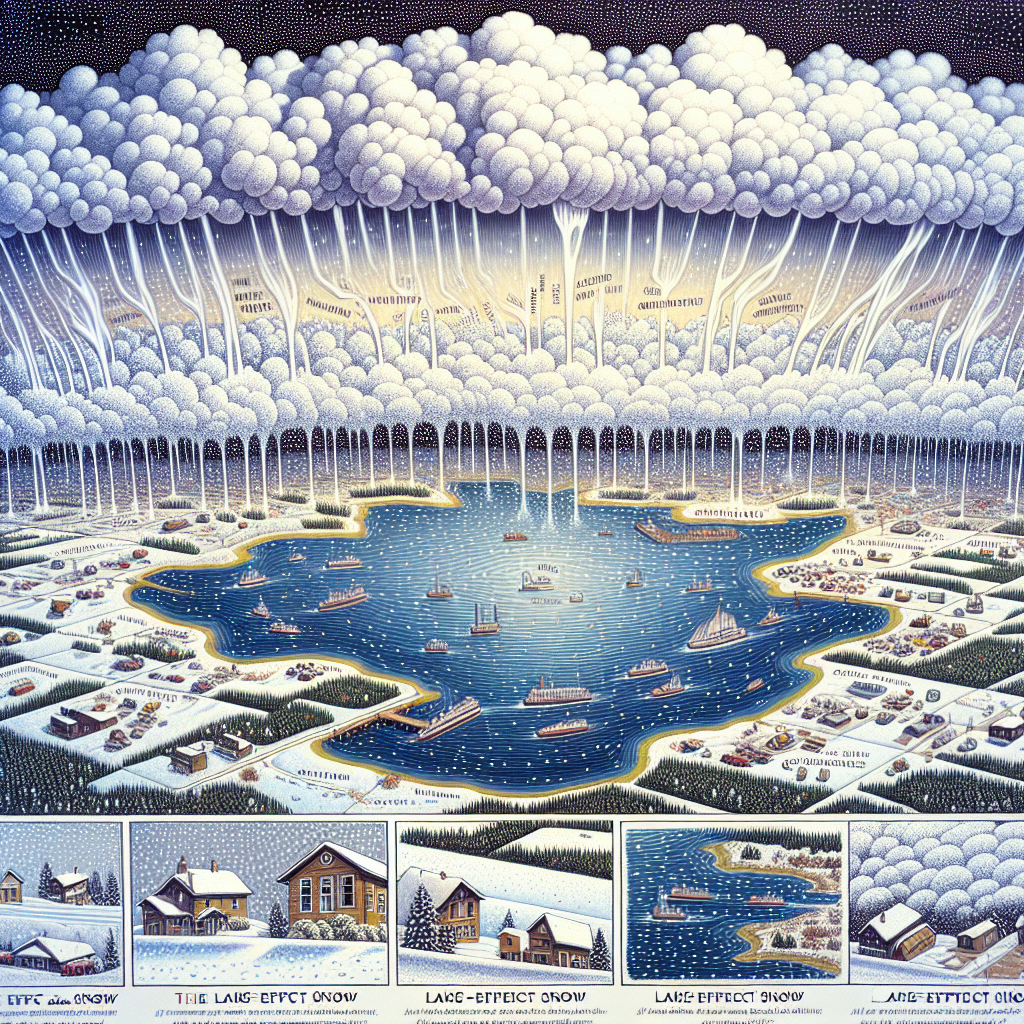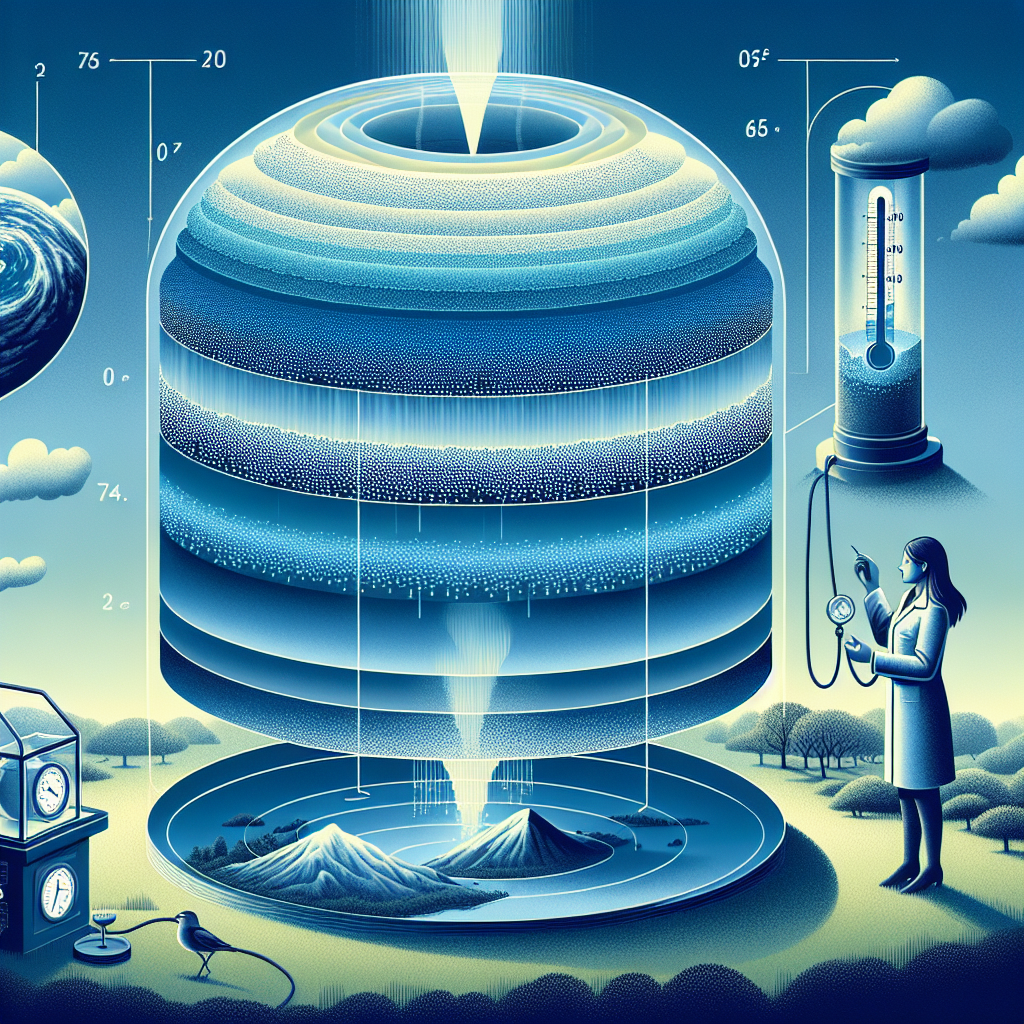Understanding Atmospheric Pressure and Its Effects
What is Atmospheric Pressure?
Atmospheric pressure, or air pressure, is the force exerted onto a surface by the weight of the air above that surface in the atmosphere. It is measured in units such as Pascal (Pa), millibar (mb), and inches of mercury (inHg). At sea level, the standard atmospheric pressure is approximately 1013.25 hPa (hectopascals) or 29.92 inHg. Atmospheric pressure decreases with altitude; as one ascends, fewer air molecules exist above, reducing the weight and the pressure exerted on an object.
Why is Atmospheric Pressure Important?
Atmospheric pressure is a critical factor in many natural processes and human activities. It influences weather patterns, ocean currents, and the behavior of gases. Understanding this concept is essential for meteorology, aviation, and various scientific disciplines.
Measuring Atmospheric Pressure
Meteorologists utilize barometers to measure atmospheric pressure. There are two main types:
- Mercury Barometers – Uses mercury in a glass tube; changes in air pressure cause the mercury to rise or fall.
- Aneroid Barometers – Contains a small, flexible metal box (aneroid cell) whose shape alters with changes in atmospheric pressure.
Both types of barometers offer valuable data related to weather forecasting and climate studies.
Factors Affecting Atmospheric Pressure
- Altitude: Higher altitudes lead to lower atmospheric pressure due to the decreased density of air. For every 1,000 meters increase in elevation, atmospheric pressure decreases by about 12 hPa.
- Temperature: Warm air is less dense and exerts lower pressure, while cold air is denser and exerts higher pressure. This variation creates different weather systems.
- Humidity: Water vapor is lighter than the nitrogen and oxygen it replaces, making humid air less dense than dry air, impacting local and global pressure systems.
- Weather Systems: Low-pressure systems typically lead to cloud formation and precipitation, while high-pressure systems are associated with clear, sunny weather.
The Role of Atmospheric Pressure in Weather
Atmospheric pressure plays a vital role in weather systems. High-pressure areas, known as anticyclones, promote descending air which inhibits cloud formation, leading to fair weather. Conversely, low-pressure areas are associated with rising air, cloud formation, and precipitation.
Fronts—boundaries between air masses of different temperatures and densities—are also influenced by pressure differences. For example, warm fronts usually bring gradual temperature increases followed by rain, while cold fronts can cause sudden weather changes.
Impact on Human Activities
- Aviation: Pilots must consider atmospheric pressure for safe operations. Pressure changes affect aircraft performance; decreased pressure can impede lift and affect fuel efficiency.
- Sports: Athletes, especially in endurance sports, often train at high altitudes to improve their performance under lower oxygen conditions. Atmospheric pressure affects the availability of oxygen for aerobic activities.
- Health: Rapid changes in atmospheric pressure can cause discomfort for some individuals. Common occurrences include barometric headaches and altitude sickness, especially in high-altitude locations.
Effects of Atmospheric Pressure on Oceans
Atmospheric pressure influences sea level. Low pressure can cause sea level to rise, while high pressure acts to depress sea level. This dynamic interaction plays a crucial role in ocean currents and climate regulation.
The phenomenon of storm surges, heightened water levels accompanying storms, can be attributed to low atmospheric pressure. As storms develop, the air pressure drops, allowing water levels to rise significantly. This can lead to coastal flooding in extreme cases.
Pressure Variations and Climate Change
Climate change is causing shifts in atmospheric pressure patterns globally. Regions may experience changes in rainfall distribution, storm activity, and temperature extremes due to modified pressure systems. Anomalies such as the Indian Ocean Dipole influence monsoon patterns through alterations in pressure gradients.
Understanding Using the Ideal Gas Law
The relationship between pressure, volume, and temperature of a gas can be expressed through the Ideal Gas Law:
[ PV = nRT ]
Where:
- ( P ) is pressure,
- ( V ) is volume,
- ( n ) is the number of moles of gas,
- ( R ) is the ideal gas constant, and
- ( T ) is temperature in Kelvin.
This law helps in explaining how changes in temperature and volume can affect the pressure in a fixed gas scenario, reinforcing the role of atmospheric dynamics.
Practical Applications
Meteorologists employ numerical weather prediction models that incorporate atmospheric pressure data to forecast weather. Understanding pressure systems enhances accuracy in predicting severe weather events, including hurricanes and tornadoes, ultimately saving lives and mitigating damages.
Conclusion: The Interconnected Nature of Atmospheric Pressure
The study of atmospheric pressure encompasses various scientific fields, revealing the intricate connection between air pressure and countless natural processes. As scientists continue to explore this vital aspect of our atmosphere, a deeper understanding will continue to inform our response to challenges like climate change, natural disasters, and effective resource management.
By understanding atmospheric pressure, we gain insight into not only meteorological phenomena but also broader environmental interactions, enabling proactive measures in an unpredictable world.

















